Rebranding Your Technology Consulting Business
By Martin Steinhobel
Brand is one of those words that has many meanings.
Depending on who you ask, it is a mark on a beast identifying its owner, a mark on a product identifying the maker, or it is something much more intangible. Today attempts to define what a brand is, involve feels, emotions, perceptions. Marty Neumeier, in his book, The Brand Gap, defines brand as…
“A person’s perception of a product, or service, experience or organization.”
For tech consulting firms, when we think or talk about branding, we tend to use the word as a noun. We see branding as the physical look and feel of marketing materials, be they printed or online. But we also know that there is more to a brand than simply marketing materials.
Brands can increase in value and decrease in value, and are often regarded as a company’s most important asset. Accountants tell us that the brand’s value is the intangible value a company acquires over time, which helps sell more products and services. How this value is to be calculated though, in a consistent and supportable manner, means the value of a brand is often only assigned on the sale of a company or asset.
Brands can also have quite different elements — and while for some brands, these may include smell, taste, or even feel — for tech consulting firms, we can mostly ignore these. The branding strategies that apply to one industry are often totally irrelevant in another.
Your tech consulting firm brand is not like a fashion brand, where a particular scent might be a central part of the brand, or a fast food brand where taste is very much part of the brand.
If you think about it for a minute, you will quickly realize that what a brand is, is dependent on both industry and who brand is aimed at influencing.
So clearly, brand is not quite as simple as we may first think. Brands definitely have an intangible quality, while branding (used as a noun) is very tangible.
Let’s think of branding used in this manner, as your visual brand identity.
For tech consulting firms, we might think of your visual brand identity as your logo and other design elements used to market your business — in other words, what your company looks like to an outsider. This is what people see when they look at your company. So what do they see?
Your audience sees your logo, the colors and fonts you use, and the way you layout your marketing materials. The images and icons you use. This is what you buy when you engage a designer or a design agency to brand or rebrand your company. Typically, brand assets are developed, and a style guide is provided to help you get the most out of your visual brand identity and develop and maintain a consistent brand image.
You then use this to brand your website, your handouts, social media, webinars, for presentations, your conference booths, corporate swag, email — anything your company puts out into the world. This is what people see and recognize when they look at your company.
This is your visual brand identity — It’s what you look like. It’s what people see.
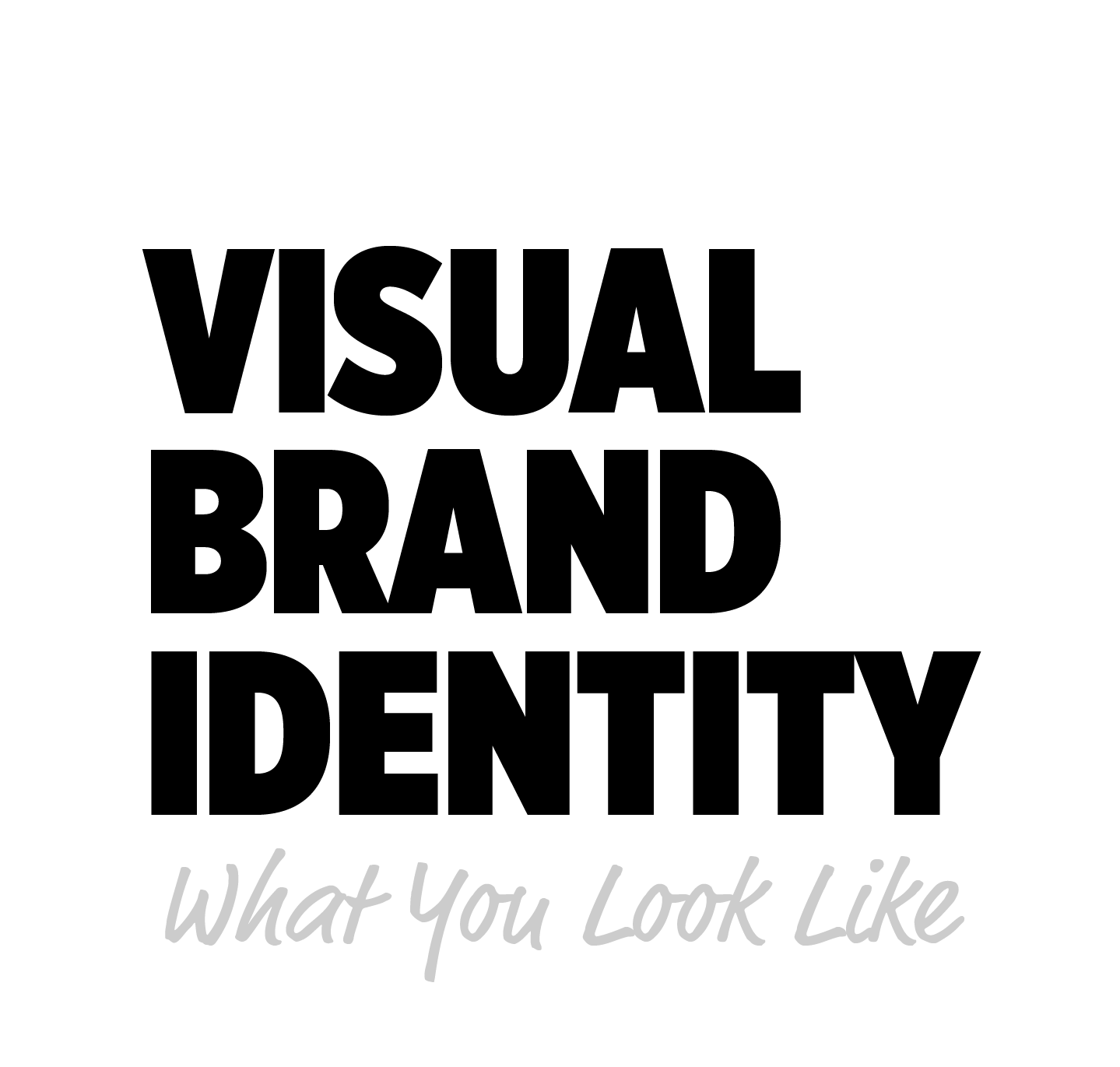
But it’s not all people see, is it? They also see what you do.
They see (and experience) the services you provide, your people, and your processes.
Your Services
They evaluate your services against what you say you do and how you do it. They also evaluate your services based on their experiences with others who provide the same services and measure you against what they expect you should be doing. And yes, they are human, and bring with them a whole lot of baggage that all plays into what they conclude.
Your People
During your sales process, you no doubt provided insights into why your consultants are just so much better than anyone else’s. How your company culture is central to everything they do. Your customers will have thoughts on whether or not the reality matches up with the hype. Are your people effective? Are they happy? Are they well trained? Do they bring with them a certain company joie de vivre? When they are ‘off the record,’ do they talk about how great it is to work for you? do they complain? or do they just seem indifferent?
Your Processes
The way you do things — or your lack of process — is also on full display. From the way you make your first pitch to your proposals and even your contract language. They will see the way you deal with problems, and the way you conduct yourself internally and externally.
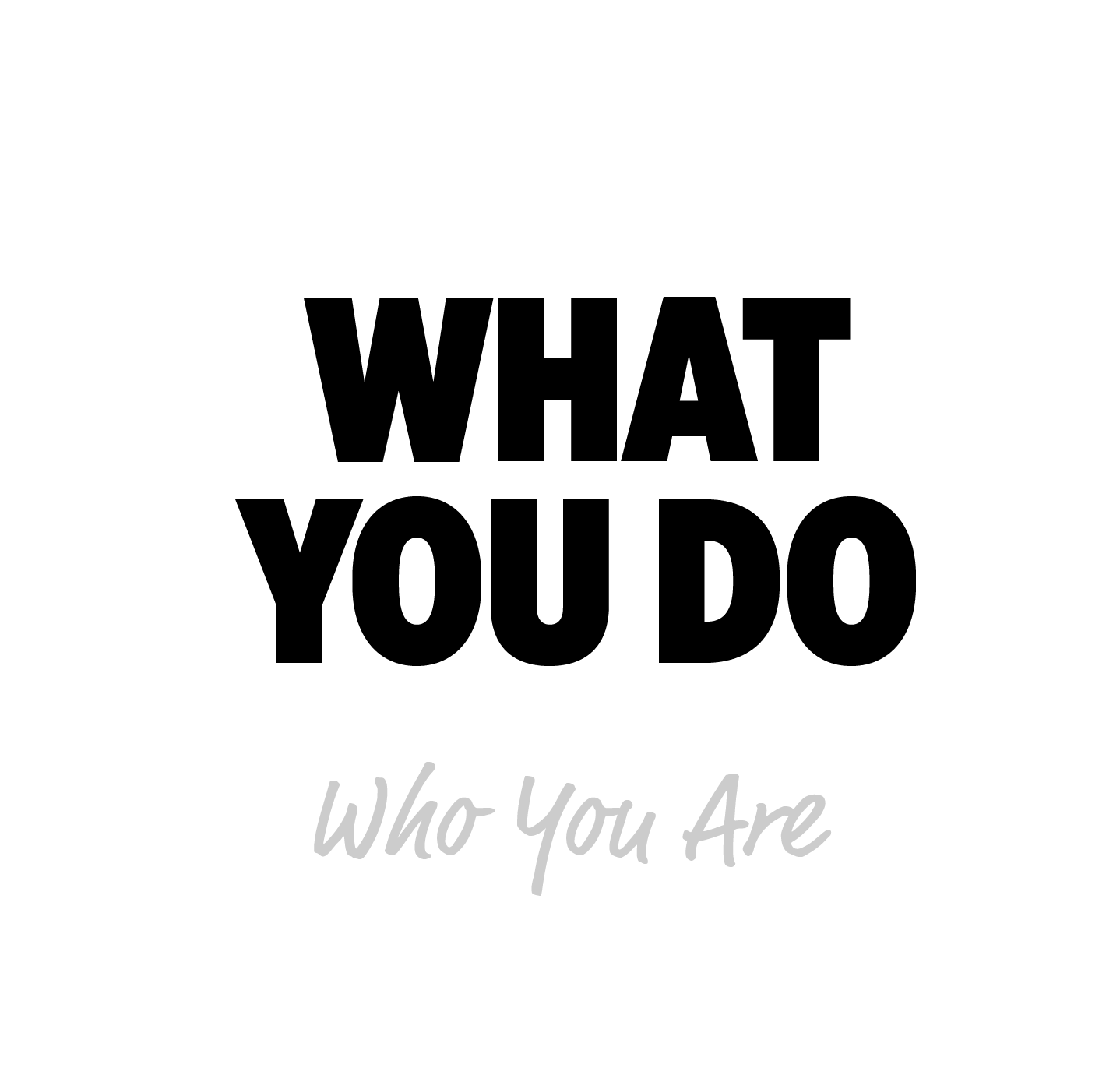
What you do is really about who you are.
So think about what people see (your visual brand identity) together with what you do as your brand identity. Your visual brand identity is just one part of your brand identity — all be it an important part — and it can go a long way in impacting how you are perceived in the marketplace.
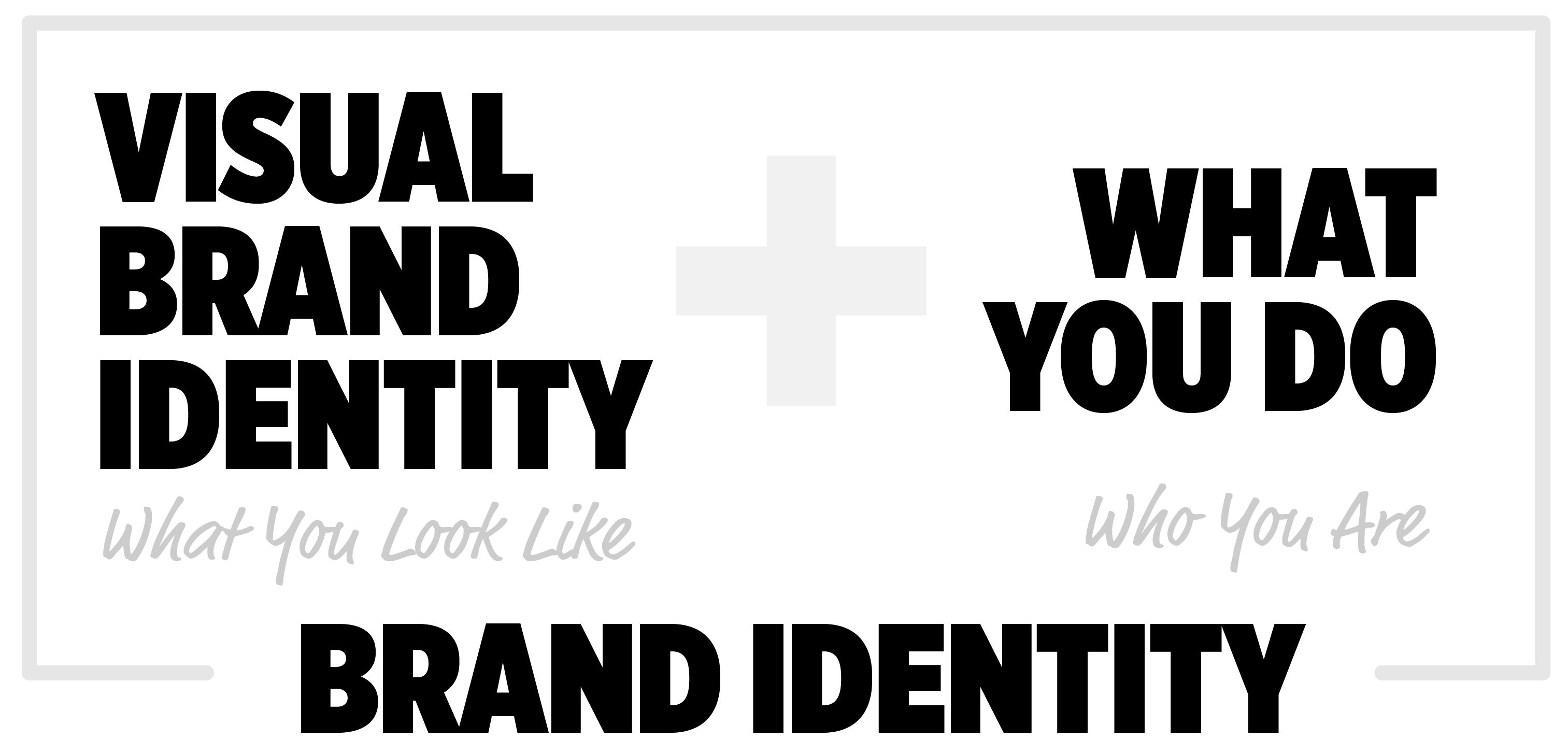
It goes without saying that your visual brand identity should be authentic and help tell your audience who you really are. Think of it as the opposite of a disguise. It should energize the way to tell your story and make your good qualities stand out — but it should not make you out to be something you are not, and certainly not promise something you can’t deliver.
How Your Visual Brand Identity Fits Into Your Larger Brand
Clearly, to develop a good visual brand identity, you do need to spend some time developing a good brand story.
Who are you?
Who needs to know?
Why should they care?
This takes time and benefits from research. If you don’t have a well-developed, clear message, pretending you do is not going to help. If your services are sub-standard or other delivery problems exist, no amount of branding is going to overcome these issues.
Your visual brand identity (what you look like) and what you do (who you are) make up your brand identity. But remember that your brand has another element too — an intangible element.
People see what you look like and what you do, and form opinions and develop feelings about that. These feelings or emotions are really what make up this third element.
The collective view of what people feel about your business at any given point in time is what will ultimately determine the value of your brand. You can have the perfect visual brand identity and do work that far outshines your competitors, but until people react to that, you don’t actually have much of a brand.
You get to shape what you do, what you look like, and what story you tell about yourself, but your audience gets to decide how they feel about that. And how they feel, and the emotional attachments they form, is what brings value to your brand.
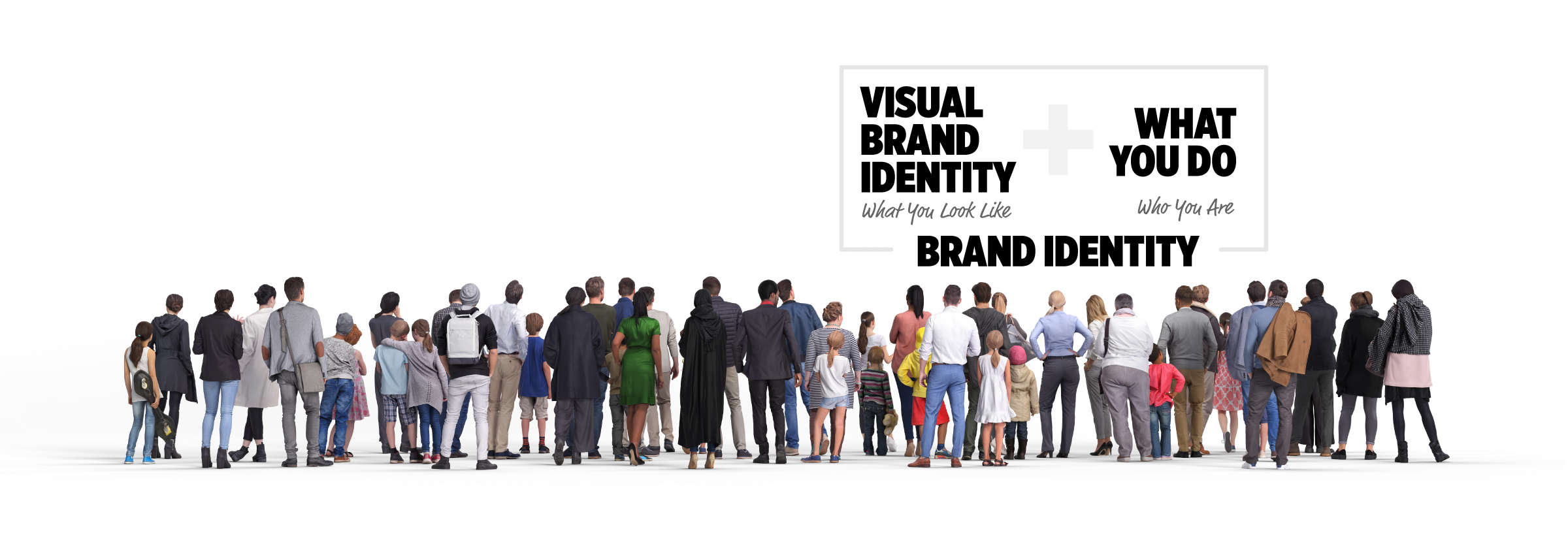
People bring baggage to the equation — they have friends and families, come from different cultures, have medical issues, experience joy and pain. All this, they bring with them as they look at your business and evaluate and judge. Your audience is not always rational, and what they think and feel can change. They also talk amongst themselves. In a way, your brand only really exists inside their heads.
To grow your brand, you need more and more people to respond to what you look like and who you are in a positive way.
This is what you are dealing with when you decide to “brand” or “rebrand” your business.
Where Does Your Visual Brand Identity Get Its Power From?
Your visual brand identity is only one of the three interrelated elements that influence your brand, but it’s an important one.
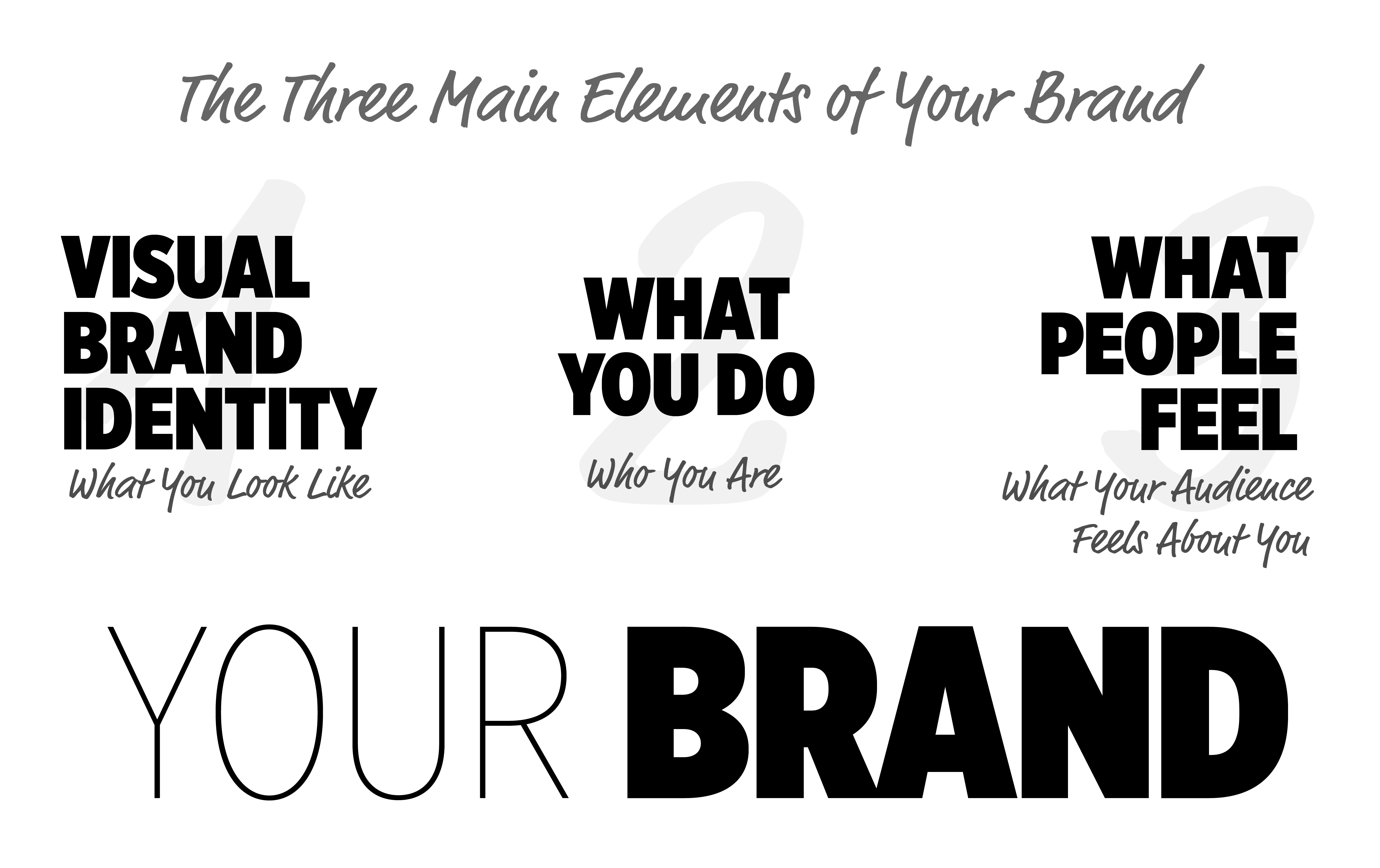
Savvy entrepreneurs know this, and use their visual brand identity to support their message and get their audiences to pay attention to their stories.
What does your visual brand identity say about you when you are saying nothing at all?

This lemonade stand sign says “neighborhood kids having fun.” I would expect to spend a quarter or so and get a sticky plastic cup, with or without ice.
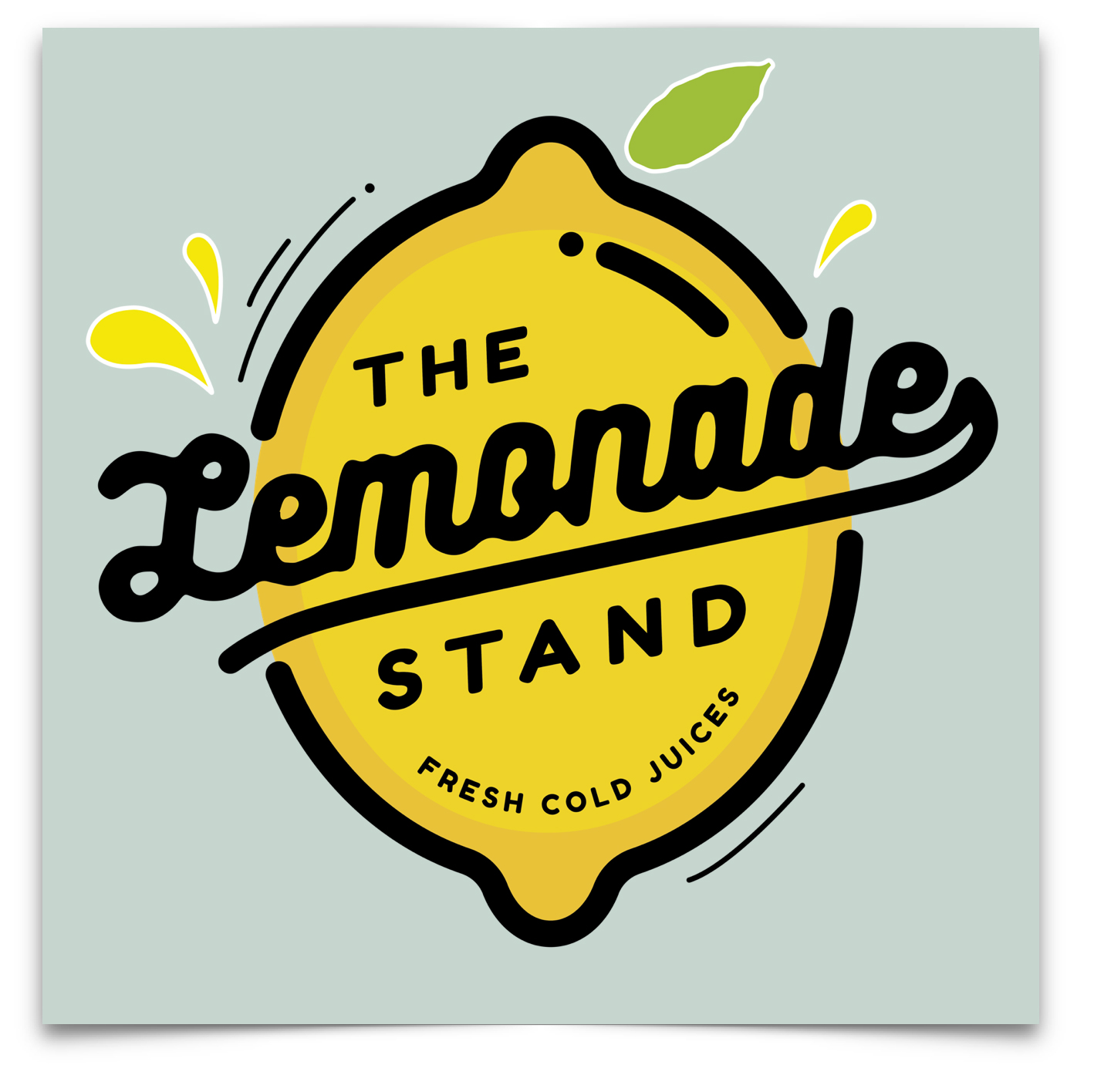
On the other hand, this sign is what one might find in the lobby of a Marriott hotel; I would expect to spend $6 or so. I would also expect a weighty glass, filled with ice, and commercially made refreshments along with a napkin.
Both signs advertise lemonade, but communicate quite different things.
So why is it that visual branding can produce such different perspectives or results? Let’s look at where this power comes from.
Our primal brains acknowledge shape first, then color, then form (words or things that need to be decoded). So, the shape of your logo will matter. It immediately triggers perceptions and unlocks associations in the blink of an eye.
If your visual brand identity is easy to remember and instantly recognizable, it will be more effective. But effectiveness must be combined with association — you want your audience to associate your company with your visual brand identity instantly.
When you see a logo your brain triggers thoughts: “I like this company,” or “I don’t like this company,” or indifference: “this company means nothing to me.”
This emotional reaction all depends on subconscious associations.
There are two elements to the power of a visual brand identity.
- How well it is designed; that is, how well the artwork supports the brand story. This is about the choice of styles and colors and fonts and logo design.
- What the visual Identity is associated with. Your company, your product(s) or services, and your people.
Take Amazon Web Services, for example. Their logo (and visual brand Identity) gets its power from its association with Amazon (specifically the technology side of Amazon).

This logo is only powerful because AWS anointed it as theirs. More likely than not, other equally well-crafted options were considered and discarded; had one of them been chosen, we would associate it with AWS, and AWS’s brand identity would’ve been built in that direction instead.
The company gives the visual brand identity its power through purposeful association.
To further illustrate this point, let’s imagine that the kids and the hotel trade signs. Marriott would still be able to charge quite a bit, while the kids would still be stuck at a much lower price point. So, the value the sign is adding in each case is not that much. Added to that, when swapped, they each suddenly lack authenticity and feel out of place.
It is very plausible that both would end up with fewer sales. The wrong branding would likely be ineffective and even counterproductive.
Having a fancy brand that’s not authentic is not going to be effective. Conversely, having a weak brand that does not represent who you really are will serve you just as poorly.
Your visual brand identity gets its power from your company; you give it power by associating it with your company. What you are telling the world is “think of us when you see these images or symbols: they represent who we are.”
Much like how a hot air balloon rises when fuel is put to its burner, your visual brand identity will expand based on the fuel it gets from your company.
If your company can do this wholeheartedly and has a lot of power… then your visual brand identity will also have a lot of power. As one grows, so does the other.
This is why visual brand identities can evolve: they get their fuel from the company or products or services they are associated with. Where a company (or brand) is evolving, its current visual brand identity may no longer reflect what the company is doing or evolving into — this is when your visual brand identity should also change.
Rebranding efforts fail when you attempt to position the brand as something that it is not, when your company does not embrace the new branding, or when the new branding is confusing or inconsistently applied.
Your visual brand identity needs to be authentic and still tell who you are. It needs to be believable. It needs to be coherent. When it doesn’t reflect you, you are headed for trouble.
Your visual brand identity also gets its effectiveness from how well it has been designed. This is subjective of course, but general principles of design matter.
- Simple tends to work better.
- Readability, scalability, and flexibility are typically a big help.
- Uniqueness will help you stand out from the crowd, but is not enough on its own.
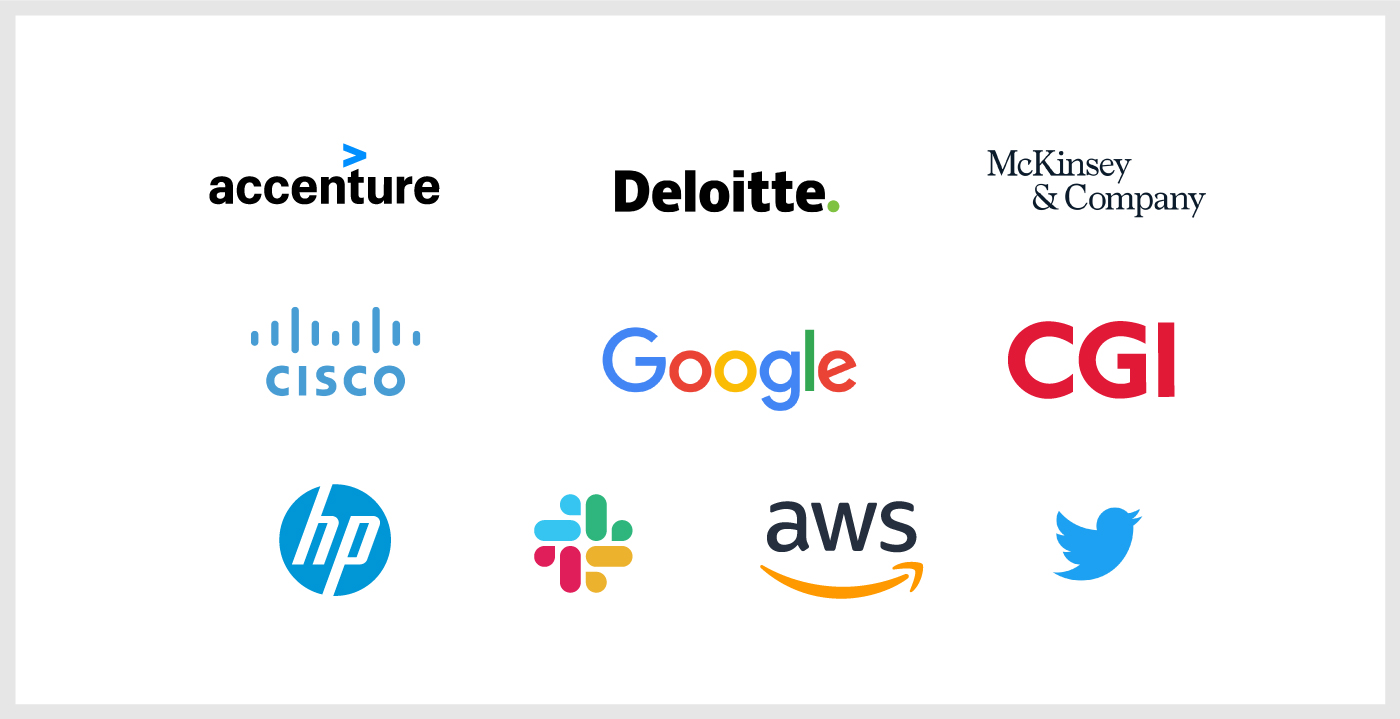
Good design takes time and benefits greatly from a clear and authentic underlying story. Form follows function. So too should your visual brand identity. This is why savvy companies spend time developing their stories and marketing messages, and then engage the tradecraft of good designers.
Standing Out
As a tech consulting firm, your logo needs to stand out visually from a sea of others — especially when you sign up to partner with others, participate in events, or appear in a list of companies providing similar services.
Keep this in mind when you evaluate visual brand element options.
Think also about conferences and events. Do you stand out? How will you look to the average attendee? Is your visual brand identity helping your audience get your message?
Visual brand identity can also be very important for tech consulting firms as it can help reinforce your company culture. You have excellent staff who love working at your company. When they talk to their friends and family, they want to be excited about their work and what they do. They want their peers to respect them and perhaps envy them just a for having such a great job and at such a great company.
Your visual brand identity can go a long way to reinforce your company culture and instill pride and a deeper connection to your company.
Conclusion
Your visual brand identity, though very important, is just one element of your brand. Understanding this will help you get the most out of it. You use your visual brand identity to stand out, to tell the world who you really are, and grow your brand’s reach and strength.
Using your brand identity to differentiate from others can be powerful. Ideally, your visual brand identity should not get in the way of your message. You know it’s working when people can see who really are.
Want to Find Out More?
Schedule a free call to discuss your specific situation today.
About Valens Point
We help early-stage tech companies accelerate growth by building brand credibility, establishing repeatable lead generation, and supporting sales and partner teams. The result — effective marketing up and running in a fraction of the time it would take to recruit, hire, and train an internal marketing team.
